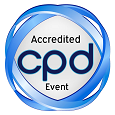
Jingwen Wang
Xijing Hospital, China
Title: Exploration and construction of clinical pharmacist training innovation mode in China
Biography
Biography: Jingwen Wang
Abstract
Purpose: The study aims at establishing a training mode for clinical pharmacists. It is expected that internationalization process of clinical pharmacist training in China can be propelled and education level and quality can be improved.
Methods: A total of 100 senior clinical pharmacists in the tertiary teaching hospitals were randomly divided into two groups, 50 pharmacists in either group. Traditional training methods (TTM) were taken in group A, while clinical practical problem training methods (CPM) were adopted in group B. Some distinctive teaching modes such as role exchange, case discussion, mobile pharmaceutical care and virtual classroom were carried out during the training period in group B. 28 scales were established for teaching evaluation so that students may perform quality assessment in the whole process including clinical practice, teaching ward-round, design of examination questions, etc.
Results: Compared with the group A (using TTM), the group B (using CPM) had remarkable superiority in regard to professional quality, clinical competence and effects of teaching. In terms of medication indicators CPM had a higher degree of contribution to the level of clinical medication compared with TTM, which was more evident in preventing errors and risks in the medication with respect to the rate of medication without indications, the occurrence of repeated medication, over-dosage and the frequency of drug administration. Moreover, the scale of satisfaction showed that CPM was highly approved by physicians, nurses, patients and their relatives. As a result, students of group B also obtained more confidence and sense of identity from the profession of clinical pharmacist.
Conclusion: It is the first time that CPM teaching mode is implemented in China. In the clinical teaching practice CPM may provide an effective training for improving students’ ability of autonomous learning, innovative thinking and problem-solving, which improves the overall effectiveness of clinical teaching and plays a prominent role in upgrading the education quality and training level for clinical pharmacists.

